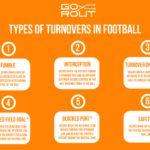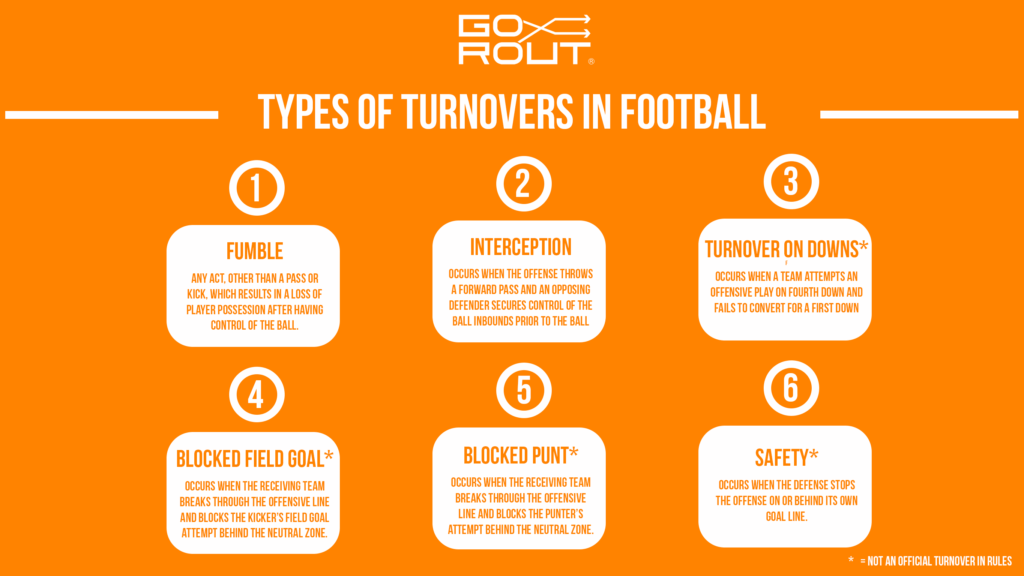13 Football Tackling Drills for Game-Winning Stops
Reading Time: 11 minutes
Reading Time: 11 minutes
13 Football Tackling Drills for Game-Winning Stops
It is crucial for coaches to instruct their players on efficient methods for tackling opponents in various game scenarios.
That’s why they include football tackling drills in their football conditioning program—to improve players’ technique and performance on the field.
In this detailed guide, we will explore 15 essential football tackling drills you can use to help your players improve tackling, whether you’re coaching a professional team or working with youth athletes.
These football drills are integral for sharpening fundamental skills and strategic play.
We will also explain how GoRout, our football play-calling system, assists teams in organizing and executing these drills, providing coaches with resources to optimize practice sessions.
Let’s get started.
The Basics of Football Tackling Drills
The fundamentals of football drills and techniques used for teaching tackling revolve around correctly positioning the upper body, feet, and head.
- Low stance: Players should maintain a low center of gravity with bent knees for balance and power.
- Feet positioning: Staying on the balls of the feet helps in quick movements and stability.
- Head up: Keeping the head up allows players to see the ball carrier and avoid dangerous collisions.
Football players initiate contact with the shoulder while keeping their head to the side to prevent head-to-head collisions. The tackler wraps their arms around the ball carrier and drives through their legs. Defenders must finish the tackle by grounding and securing the ball carrier before releasing.
Why are Football Tackling Drills Important?
Football tackling drills teach players the importance of fundamentals, proper technique and player safety on the field. A tackling drill helps defenders attack the opposing team’s offense and contributes to these key elements.
- Skill development
- Safety
- Efficiency and performance
- Confidence building
- Team coordination
Coaches can conduct tackling drills during practice during preseason training and throughout the seasons.
13 Football Tackling Drills to Implement Right Now
Let’s share the most important football tackling drills you can implement immediately in your football practice plan to create an advanced tackling system.
1. The Angle Tackling Drill
The angle tackling drill helps players practice and refine their pursuit angles technique when approaching a ball carrier from the side. This drill mimics real-game scenarios, allowing defenders to adjust their approach and make effective tackles while moving laterally.
Key components
- Stance and positioning: Players start in an athletic stance with knees bent, weight balanced on the balls of their feet and heads up to maintain vision of the ball carrier.
- Approach: The tackler approaches the ball carrier from an angle, maintaining a low center of gravity and proper body alignment for stability and control.
- Contact and finish: The tackler initiates contact with their shoulder, wraps their arms around the carrier’s waist or legs and drives through to complete.
Benefits
- Improves technique
- Enhances agility and reaction time
- Builds confidence
Implementation tips
Use cones or markers to designate the starting points and angles of attack. Start slow with proper technique and gradually increase attack speed and progression.
2. The Sideline Tackling Drill
This football tackling drill teaches players to use the sideline as an additional defender. It helps players tackle effectively when the ball carrier runs along the sideline, using proper angles and techniques to drive the ball carrier out of bounds or bring them down safely.
Key components
- Positioning: Players position themselves between the ball carrier and the sideline with the correct angle to push the carrier out of bounds.
- Angle of Approach: The tackler must approach the ball carrier at an angle that cuts off their path down the sideline.
- Contact and Leverage: The tackler initiates contact with their shoulder and wraps their arms around the carrier while using the sideline to limit escape options.
Benefits
- Uses the sideline
- Improves angle tackling
- Boosts game awareness
Implementation tips
Start slowly, using cones to mark the middle, the sideline and the ground. Gradually increase the speed and intensity of the drill to improve decision making on angles and timing. Focus on keeping the head up and initiating contact with the shoulder to avoid injuries.
3. The Mirror Drill

The Mirror Drill gives players the advantage of reacting to and mirroring the movements of a ball carrier. By simulating one-on-one, open-field scenarios, this drill develops quick reflexes, proper positioning and effective tackling techniques.
Key components
- Stance and readiness: Players start in an athletic stance—knees bent, weight on the balls of their feet, heads up—ready to move in any direction.
- Mirroring movement: The defender mirrors the movements of the offensive player and stays in front with proper distance to react and make a tackle.
- Engagement and tackle: The offensive player makes a decisive move, and the defender engages to make a hit.
Benefits
- Improves reaction time
- Better agility and footwork
- Builds defense skills
Implementation tips
Set up two cones ten yards apart and have players practice moving side to side within this space with a low stance and quick feet moving around. Keep the drill non-contact. The defender should constantly change direction as the tackler mirrors these movements to stay in front.
4. The Lift Drill
The drill instructs players to lift and drive through a ball carrier. Players work in pairs as tacklers and ball carriers. To provide structure, you can conduct the drill in a designated area or within a grid.
Key components
- Leverage: Maintain leverage by getting low and driving upward into the ball carrier’s body to lift them off the ground.
- Power and drive: Focus on generating power from the legs and hips to drive through the tackle. Ball carriers absorb the contact and fight to maintain balance.
- Controlled execution: The drill creates controlled aggression throughout the tackle.
Benefits
- Tackling technique improvement
- Increased physicality and strength
- More confidence and competitiveness
Implementation tips
When running this drill, start at half speed. Have the tacklers and the ball carrier time their jump to reduce strain on the tackler and make the lift easier. The tackler should focus on rolling their hips during contact, keeping their head and eyes up, and maintaining a flat back.
5. The Four-Point Explosion Drill

The Four-Point Explosion Drill improves a football player’s explosiveness, power and agility from a stationary position. It helps develop quick bursts of speed and power.
Key components
- Starting position: Players begin in a four-point stance, with both hands and feet on the ground, knees bent, and weight evenly distributed.
- Explosive movement: They explode from the four-point stance, generating force from the legs and core, with hands coming up quickly to engage a dummy or pad.
- Controlled drive: Use a low pad level while driving forward, keeping balance and staying low to the ground.
Benefits
- Explosiveness
- Lower body strength
- Refined technique
Implementation tips
Coaches make players start in a correct four-point stance with proper weight distribution and posture. They use consistent and clear signals to help them react quickly and develop timing. They also gradually introduce resistance or heavier targets to simulate real-game conditions.
6. The Pursuit Drill
The Pursuit Drill involves chasing down and tackling the ball carrier from various angles. It focuses on developing speed, angles, teamwork and communication among defensive players in a practice and games.
Key components
- Cones and markers: Set up four cones in a right triangle formation with the goal line marked by the fourth cone. Place the defender inside the lower cone and the ball carrier outside.
- Taking the correct angle: The ball carrier receives a handoff or pass and runs for the goal line. The defender must take the correct angle to stop the ball carrier before reaching the goal line.
- Making adjustments: Emphasize proper pursuit angles, timing and adjustments for the defender to tackle the ball carrier and prevent a touchdown.
Benefits
- Improves pursuit angles
- Team coordination
- Increased speed and agility
Implementation tips
Explain taking proper pursuit angles and correct players who take inefficient paths or overrun the play. Change the positions of the ball carrier and defenders to simulate different game situations. Verbal communication among defenders improves coordination and prevents gaps in coverage.
7. The Strip Tackle Drill
This drill helps players work on stripping the ball from the ball carrier while making a tackle. It develops hand-eye coordination, timing and technique to force more turnovers.
Key components
- Conduct in pairs: One player acts as the ball carrier, while the other takes on the tackler role. The ball carrier securely holds the ball, and the tackler prepares to strip it from them. This drill helps offensive players work on ball security and defenders work on the most effective ways to get it out.
- Swipe at the ball: The ball carrier begins running, and the tackler approaches to make the tackle. The attacker uses one hand to secure the tackle and the other to swipe at the ball.
- Maintain ball control: The tackler maintains control with the correct hand position and timing to strip the ball.
Benefits
- More turnovers
- Hand-eye coordination
- Reinforces tackling fundamentals
Implementation tips
Incorporate the drill into each practice session to build muscle memory and improve proficiency. Teach ball carriers proper ball security techniques. Provide positive feedback when players successfully execute the strip. Communicate that this drill is to practice attacking the ball and recognizing opportunities to do so. Form tackling always takes priority.
8. The Gang Tackling Drill
The Gang Tackling Drill improves teamwork, coordination and tackling by bringing down a ball carrier with multiple tacklers. It teaches players to gang up on the ball carrier.
Key components
- Multiple defenders: A ball carrier and multiple defenders, at least eight players, are within a defined area, with the defenders spread out around the perimeter.
- Collaboration: Defenders work together to close in on the ball carrier from different angles.
- Communicate: Defenders communicate with each other to maintain proper spacing and timing. They know if they are the primary tackler or assisting in securing the tackle.
Benefits
- Improves teamwork
- Reduces missed tackles
- Builds defensive confidence
Implementation tips
Guide positioning, roles and responsibilities. Encourage great communication for coordination and monitor efforts to simulate game-like intensity.
9. The Goal Line Tackling Drill
This football tackling drill prepares defenders for high-pressure situations near the end zone. The goal is to stop the ball carrier in short-yardage scenarios.
Key components
- Low stance: Defenders start in a low, athletic stance to prevent the ball carrier from crossing the goal line.
- Quick engagement: Quickly react to the snap, engage the ball carrier with strong contact and maintain the leverage to drive him backwards.
- Tackle completion: Wrap up the ball carrier using leg drive to finish the tackle so the carrier is fully grounded.
Benefits
- Improves goal-line defense
- Builds mental toughness
- Team coordination
Implementation tips
Start the drill at a moderate pace. Use cones to mark the goal line area and establish clear boundaries. Defenders can start on a knee to emphasize the need to stay low and maintain leverage against the ball carrier.
10. The Wrap and Roll Tackle Drill
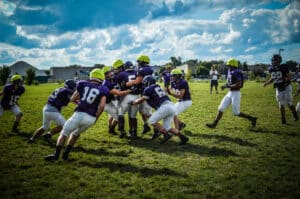
Teach players to wrap up the ball carrier and use a rolling motion to bring them down. This technique is suitable for a secure tackle and reduces the risk of the ball carrier breaking free.
Key components
- Initial contact: Players make initial contact with their shoulder to hit low and wrap their arms around the ball carrier’s legs or lower body.
- Wrapping: Securely wrap both arms around the ball carrier to prevent an escape.
- Rolling motion: The tackler uses their body weight to roll and twist the ball carrier to the ground.
Benefits
- Secure tackles
- Safety
- Effective against larger players
Implementation tips
Use padded dummies to simulate ball carriers for controlled practice. Gradually increase the speed and intensity as players become more comfortable with the technique.
11. The Pop-Up Tackle Drill
The Pop-Up Tackle Drill helps players quickly recover and make a tackle after being knocked down. This drill works on agility and proper tackling technique, simulating game situations where players must respond rapidly to sudden changes.
Key components
- Quick recovery: Players start lying on the ground and must quickly rise.
- Immediate engagement: With strong initial contact, players immediately engage with the ball carrier or a tackling dummy.
- Tackle execution: They use leg drive to complete the tackle and maintain balance and control.
Benefits
- Improves agility
- Boosts reaction time
- Trains technique
Implementation tips
Players practice the pop-up motion without tackling to ensure proper recovery technique. Use tackling dummies or padded shields for safe practice and maintain balance and proper form throughout the drill.
12. The Open-Field Tackling Drill
This tackling drill gives players an advantage when tackling one-on-one situations in an open space. It improves tackling technique, agility and decision-making when facing a ball carrier in a wide-open area.
Key components
- Pursuit angle: Players practice taking proper angles to approach the ball carrier for fewer missed tackles.
- Breakdown: They learn to decelerate and maintain control before making the tackle.
- Form tackle: Athletes must have their heads up and drive through the tackle.
Benefits
- Open space tackling
- Location awareness
- Confidence
Implementation tips
The key for the tackler is to keep his feet moving and focus on the ball carrier’s torso. The hips reveal the ball carrier’s chosen direction.
13. The Form Tackling Drill
This drill is crucial for developing proper tackling technique and executing tackles correctly in game situations – thus the term “form tackling”.
Key components
- Positioning: Players start in a balanced, athletic stance with feet shoulder-width apart and knees slightly bent.
- Initial contact: The tackler uses the shoulder in the ball carrier’s midsection with their head up and to the side.
- Wrap and drive: Wrap both arms around the ball carrier and drive through with the legs.
Benefits
- Correct form
- Advanced safety
- Practices lift tackling
Implementation tips
Try the drill with face masks on for safety. If the player’s head is not in the proper position, the ball carrier will be off balance and unable to carry.
How Technology Boosts Your Football Tackling Drills
Sports coaching technology provides coaches with state-of-the-art tools to design, implement, organize and analyze practice sessions while preparing their teams for game day.
Advanced football practice solutions like GoRout offer sophisticated web and mobile apps and football practice devices for players that allow coaches to manage and communicate plays seamlessly.
Wearable technology in sports allows coaches to send play calls and instructions directly to players during practice for swift and clear communication.
Players can receive real-time feedback on their performance to adjust and improve their tackling techniques during drills.
How to Implement GoRout into Football Practice
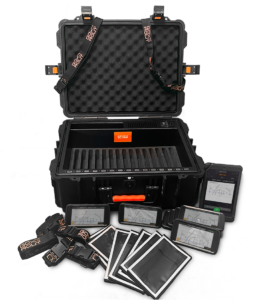
Thousands of coaches, players and teams have optimized their practice routines with GoRout equipment.
Web scripting app

We’ve created an easy-to-use web app that simplifies the creation and management of football practice scripts. Our platform helps football coaches prepare their teams for any scenario by seamlessly integrating with various play-drawing tools. The app allows quick creation, editing, copying and reordering of scripts or football coaches’ play cards.
On-field practice app
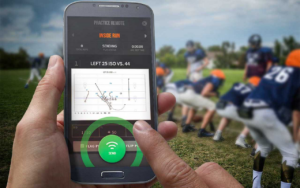
The On-Field Football Practice application for coaches uses GoRout STEEL™ to streamline information and create an ultra-efficient football practice script by organizing practice scripts and delivering play calls. The app ensures swift, seamless communication with each player. Features include on-field formation flipping, one-tap play flagging for instant review and live-editing of cards directly on the field.
On-field player device
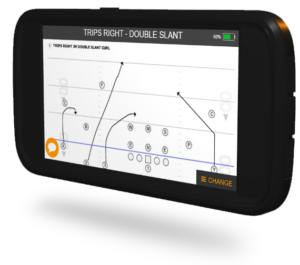
GoRout wearable practice devices withstand the most intense practices and physical contact. They offer a hassle-free experience for coaches and players without a WiFi connection.
Coaches can distribute plays by selecting practice groups so that all players stay organized and prepared throughout the session. Players can access football screen plays, drawings and position-specific messaging on their football wristbands.
Why Prepare Your Team for Game Day with GoRout
GoRout is a revolutionary football play-calling system for on-field communication during football practice and games. The web and mobile apps boost practice efficiency, save time and increase repetitions for better tacklers.
GoRout testimonials show how hundreds of coaches use GoRout to teach fundamentals, develop their players and accelerate their success on the field.
Conclusion
These 13 football tackling drills boost your team’s defensive skills, leading to game-winning stops.
Each drill focuses on fundamental techniques and situational awareness to prevent opponents from gaining extra yards.
Advanced football coaching gear like GoRout coach-to-player communication systems help with practice coordination and effectiveness.
Get a quote today and see how GoRout can help your team boost their performance.
FAQs about Football Tackling Drills
How do I improve my tackling in football?
Use football tackling drills, tackling dummies and live tackling. These drills perfect your form, enhance timing and build confidence in games.
What are tackling drills in football?
Tackling drills are exercises to practice form and technique safely. They simulate real-game conditions, improve timing and execution and develop skills.
How to teach kids to tackle in football?
Emphasize a low stance, leading with the shoulder and wrapping up with their arms. Use tackling dummies and controlled drills to practice safely. Check out our youth football playbook.
How to teach form tackling?
Maintain a low center of gravity, keep the head up, lead with the shoulder and wrap up the ball carrier.

